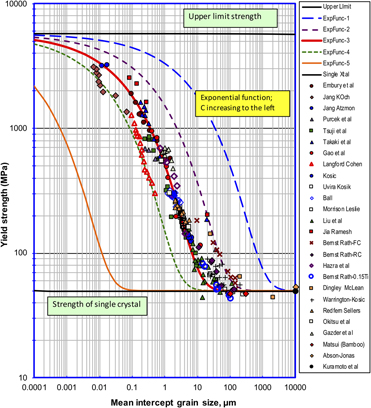Published online by Cambridge University Press: 03 July 2019

A rigorous analysis of yield strength of pure iron over a wide grain size scale, using an extensive compilation of experimental data, indicates that the common Hall–Petch relationship is not obeyed with large deviations at the extremes of grain size. The author proposes here a phenomenological exponential function to represent the grain size effect on strength over multiple length scales. It is shown that the exponential function describes the grain size dependence of strength remarkably well, on the basis of a large set of experimental data for pure Fe. A nonlinear regression analysis indicated that the function provided a very high degree of correlation of data. The validity of the function is also supported by its conformation to physical boundary conditions at the extremes of grain size, that is, by asymptotically reaching the limiting stress for dislocation nucleation at infinitesimal grain size, and, the strength of single crystal at infinite grain size. The exponential form is a significant improvement over the Hall–Petch relationship and may be used as a guide to develop a reliable theory of grain size strengthening of iron.